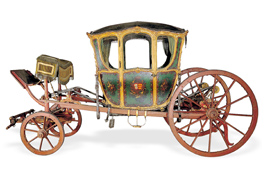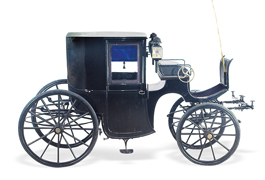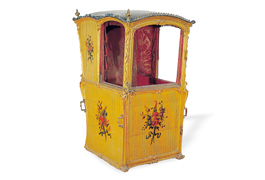
Ceremonial vehicle. In the second half of the 17th century, in Berlin, in the reign of Frederic William, a new model of vehicle emerged designed by Berlin. The body was suspended on two strong leather straps stretched lengthwise by means of a cric, a rolling mechanism, with a hatchet break inserted in the rear set of wheels. This type of vehicle is faster and safer than a coach. In Portugal, it was only used by the Royal House in the early 18th century.





